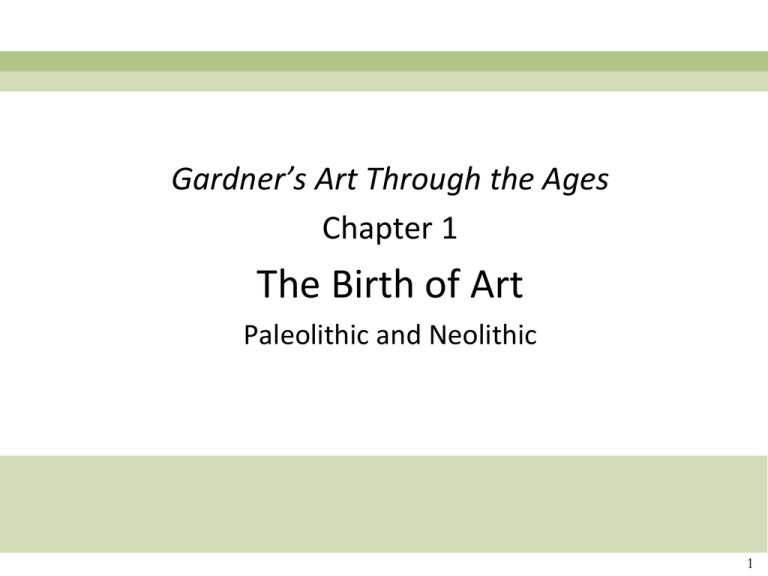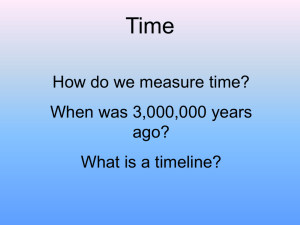Chapter 1 PowerPoint
advertisement

Gardner’s Art Through the Ages Chapter 1 The Birth of Art Paleolithic and Neolithic 1 Prehistoric Europe and the Near East 2 Waterworn pebble resembling a human face, from Makapansgat, South Africa, ca. 3,000,000 BCE. Reddish brown jasperite, approx. 2 3/8” wide. Nude woman (Venus of Willendorf), from Willendorf, Austria, ca. 28,000–25,000 BCE. Limestone, 4 1/4” high. Naturhistorisches Museum, Vienna. Woman holding a bison horn, from Laussel, France, ca. 25,000–20,000 BCE. Painted limestone, approx. 1’ 6” high. Musée d’Aquitaine, Bordeaux. Bison with turned head, fragmentary spearthrower, from La Madeleine, France, ca. 12,000 BCE. Reindeer horn, 4” long. Figure 1-10 Spotted horses and negative hand imprints, wall painting in the cave at Pech-Merle, France, ca. 22,000 BCE. 11’ 2” long. Figure 1-12 Rhinoceros, wounded man, and disemboweled bison, painting in the well of the cave at Lascaux, France ca. 15,000 – 13,000 BCE. Bison 3’ 8” long. Example of animal human hybrid Human with feline head, from Hohlenstein-Stadel, Germany, ca. 30,000–28,000 BCE. Mammoth ivory, 11 5/8” high. Ulmer Museum, Ulm. Human skull with restored features, from Jericho, ca. 7200–6700 BCE. Features modeled in plaster, painted, and inlaid with seashells. Life size. Archaeological Museum, Amman. Deer hunt, detail of a wall painting from Level III, Çatal Höyük, Turkey, ca. 5750 BCE. Museum of Anatolian Civilization, Ankara. Volcanic eruption, watercolor copy of a wall painting from Level VII, Çatal Höyük, Turkey, ca. 6150 BCE. Aerial view of Stonehenge, Salisbury Plain, England, ca. 2550–1600 BCE. Circle is 97' in diameter; trilithons 24' high.





